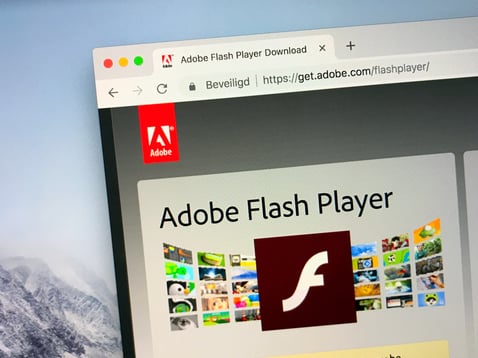Best Practices When Converting Flash eLearning to HTML5
It is now clear to all development professionals that Adobe has discontinued its Flash product, replacing it with HTML5.
Flash has been in use for two decades and used by developers to create games, multimedia content, and videos for online use. Flash has also been used in the development of eLearning courses meaning that once Flash is discontinued, many eLearning programs will no longer be supported and may stop working altogether.
To maintain the online content created with Flash like gaming, advertising and eLearning, companies have stated to plan for HTML5 conversion using Flash conversion software. HTML5 will strive to offer flexibility and improve the learning experience for employees as they will be able to access training programs at their convenience with less technical issues.
When phased out, the components created using Flash will quickly become obsolete. For your organization to keep its development and learning programs running, you will be required to convert your courses to HTML5 using a Flash conversion software. Below are some best practices to follow while converting Flash eLearning to HTML5:
1. Prioritization
During the conversion, ensure that you identify all your Flash courses that you need to convert to HTML5 and then prioritize them. You can do this by going through all your courses and classifying the ones having Flash elements and require updating. After this, prioritize the courses to ensure that the most important courses are converted first. This is since there might be snags during the process; therefore, you will need to ensure that the most significant courses are done on time.
Additionally, ensure that you know the type of authoring tool the courses were built with. The process of conversion may differ from one course to another based on the tool they were built with.
2. Determine the Assets Associated with the Courses
After prioritization of the courses, you will have to find the original assets from the courses. This is to ensure that you access the original files of the courses to make it easy for the instructional designer and the course developer to rebuild and export it in HTML5 easily. This option ensures that you quickly acquire the course in HTML5 without necessarily rebuilding the assets. You will need to find the images, text and animations among other assets used in creating the course so it can be easily converted.
3. Choose the Level of Conversion Every Course Requires
There are two types of conversion that you can choose from for every course, including:
-
Rebuild the course
You can choose this option if you need to update the material when you don’t have the original asset files. Moreover, courses that are older may benefit from a refresh to the visual content and style. This option is intensive, and it requires a talented and professional Instructional Designer.
-
Convert the existing content
This option includes taking the available assets and exporting the course in an HTML5 format. This is the easiest and the cheapest option you can use, and it takes less time to convert the course as compared to rebuilding the course option. However, to use this option, you will need to have all the course assets files.
4. Identify Gaps to Improve Courses
If you decide to take this opportunity of conversion to work on improving the courses, then you will have to set some time aside with an Instructional Designer to choose the parts of the course to be maintained and the parts to be updated. The time taken doing this will depend on the number of courses you need to update and the type of updates. Some parts you can upgrade include images, content, sounds, videos, branding, and transitions. You should also consider if the current course is mobile responsive as it is likely to affect your scope of work required to rebuild the course.
5. Consult the Stakeholders Involved in the Process
You will need to coordinate with all the stakeholders involved in the process, including HR, decision-makers, Instructional Designers, budget decision-makers and those involved in the distribution of the courses like managers.
6. Plan Your Approach to Convert Flash to HTML5
The information obtained is essential to help you get a final strategy to convert Flash to HTML5. You will need to decide on the resources you need from every stakeholder and time to complete the process effectively. It would be best if you involved an Instructional Designer in the planning process as they will use their skills and experience to help you strategize and ensure a successful transition, they will also ensure that you have all the skills required for the conversion.
Instead, you can hire a course development team to manage the conversion process.
The experts at TrainingFolks can assess your existing courses and requirements to give you an insight into the conversion process in every course. We can also give you an estimate following the scope of your work alongside the expected time frame that will be required to complete the conversion.
If you are interested in learning more about converting your Flash eLearning to HTML5, check out our FREE download 'Mapping your way from Flash to HTML5', a 7 step guide to help with successfully migrating your corporate training courses.


